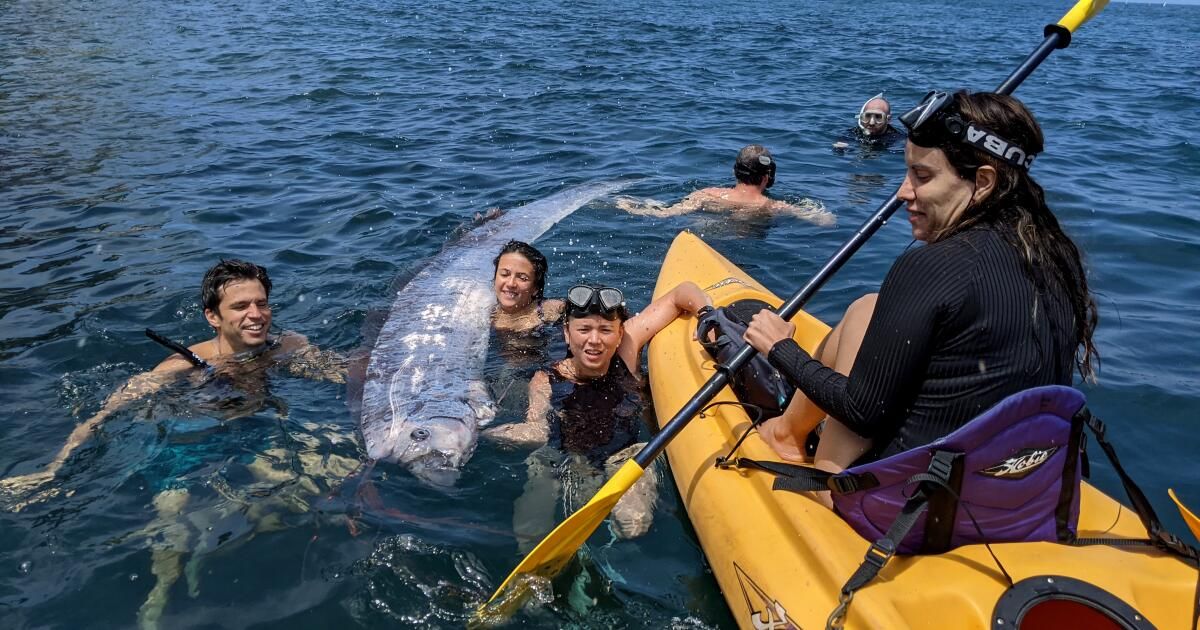A group of friends exploring the waters of La Jolla Cove on Saturday came across a sea creature unlike anything they had ever seen before: a rare 12-foot-long fish from the depths of the ocean.
The giant oarfish, the world's largest bony fish, was spotted floating dead near San Diego, just the 20th such fish to wash up on the California coast since the early 20th century, according to Ben Frable, manager of the Marine Vertebrate Collection at the Scripps Institution of Oceanography at the University of California, San Diego.
“They’re not common here in California,” Frable said, adding that these long, ribbon-like fish are periodically found on beaches around the world, most often in the tropics. “These fish typically live in deepwater, open ocean environments.”
The scientifically minded group of kayakers and divers immediately notified officials of their find, helping to bring the lifeless oarfish to shore for further investigation.
“People have studied them, but we’ve rarely interacted with them alive in the wild,” Frable said. He added that a team of scientists from Scripps and NOAA will conduct a necropsy to try to understand how the fish died, as well as genetic testing to inform further research into the mysterious creatures’ anatomy and habitat and the deep-sea food chain.
“This beautiful, long, silvery fish has always been a fish of interest,” Frable said, mentioning its large eyes and mane-like red crest on its head. “It definitely looks extravagant; it evokes sea serpent mythology.”
(Emily Miller)
And that tradition may be the most notable reason the oarfish is famous. It has long been considered a fish of the end of the world, a reference that likely comes from Japanese folklore, which considered seeing such a fish to be an omen of natural disasters, especially earthquakes.
Frable pointed to a 2019 study that concluded there was no correlation between an oarfish or other deepwater fish washing ashore and a subsequent disaster, calling the link a “typical illusory correlation.”
Still, the oarfish, which can reach up to 30 feet in length, continues to generate plenty of interest. Anyone in Southern California interested in seeing one up close can visit the Natural History Museum of Los Angeles County, where an oarfish found near Catalina Island is on display.
This oarfish sighted in the La Jolla area will likely be preserved and stored at the Scripps Marine Vertebrate Collection, home to about 2 million specimens, including both whole and part oarfish, Frable said.
“I hope I can keep the fish in the collection,” he said. “It will be part of the collection in some way. It’s a very big fish.”
Officials recommend that anyone who encounters a unique sea creature alert lifeguards and notify the Scripps Institution of Oceanography at [email protected] or (858) 534-3624.












